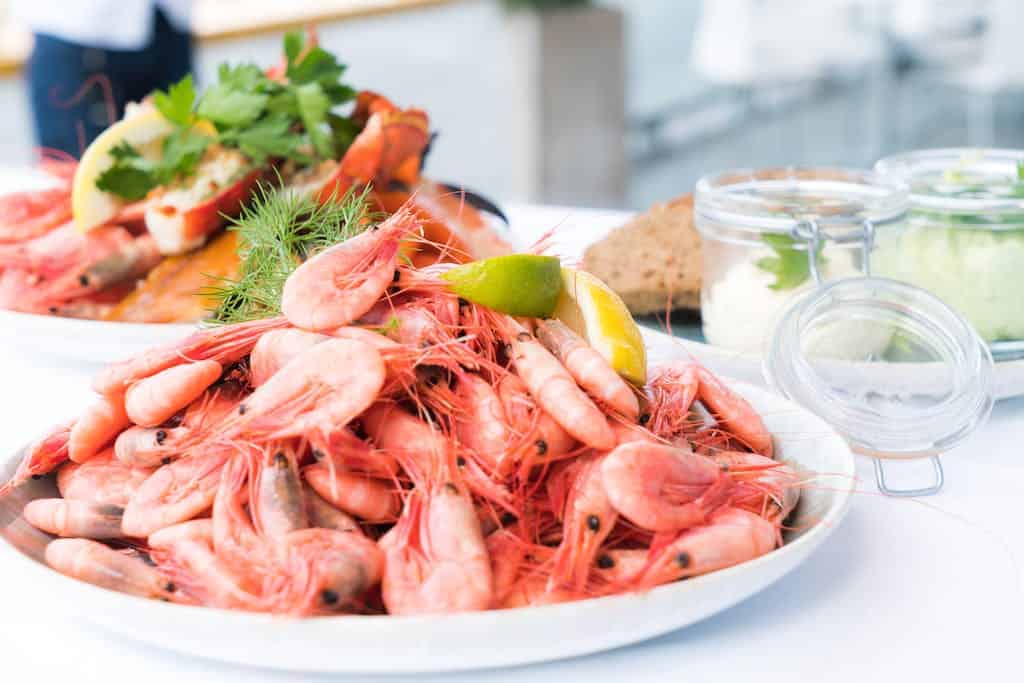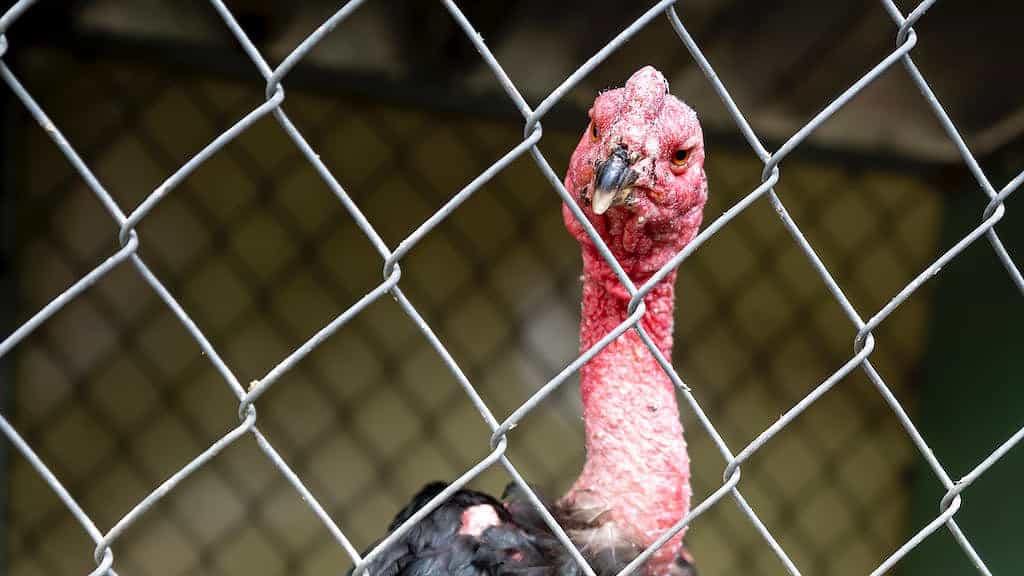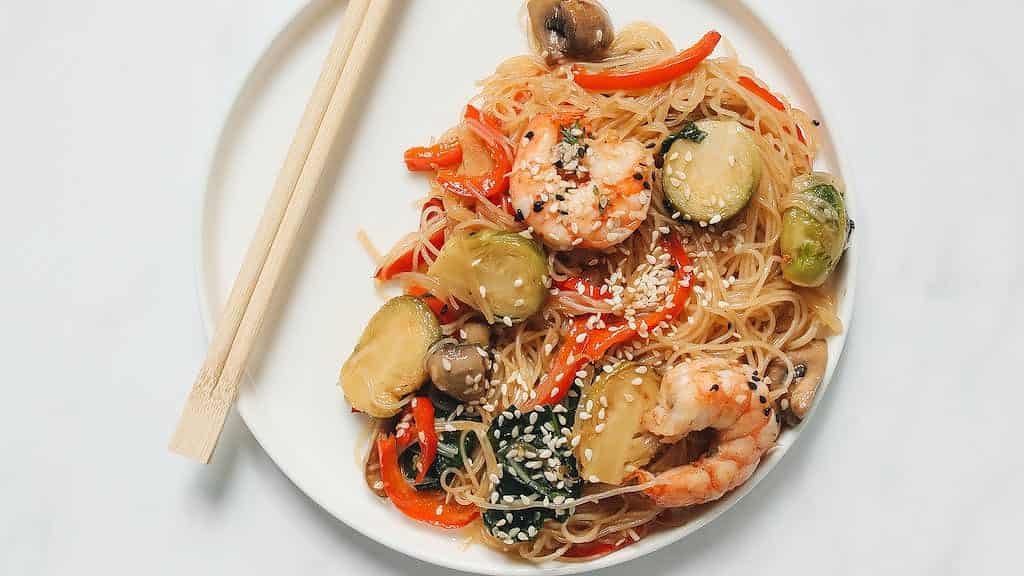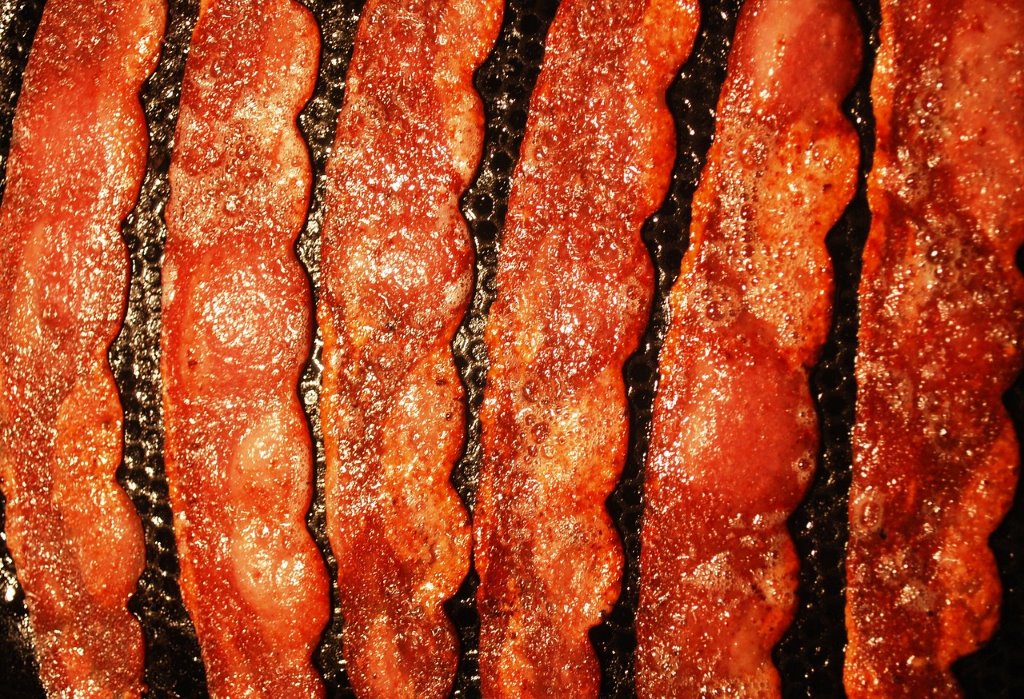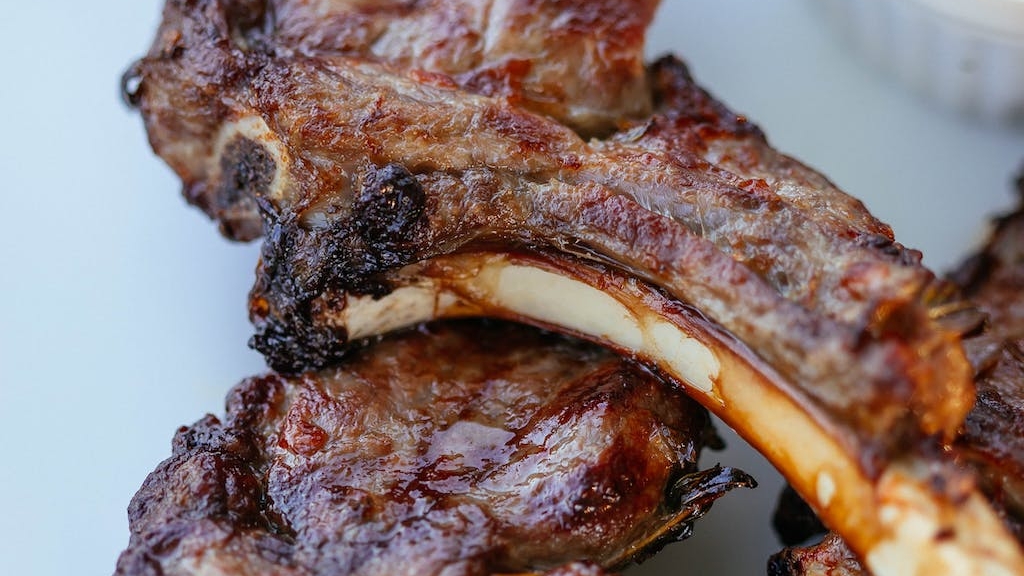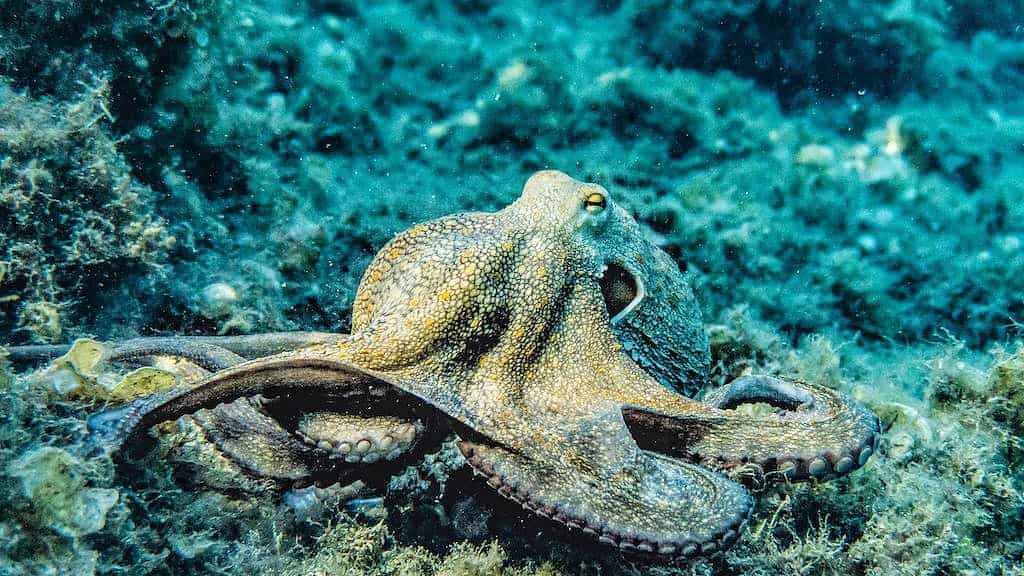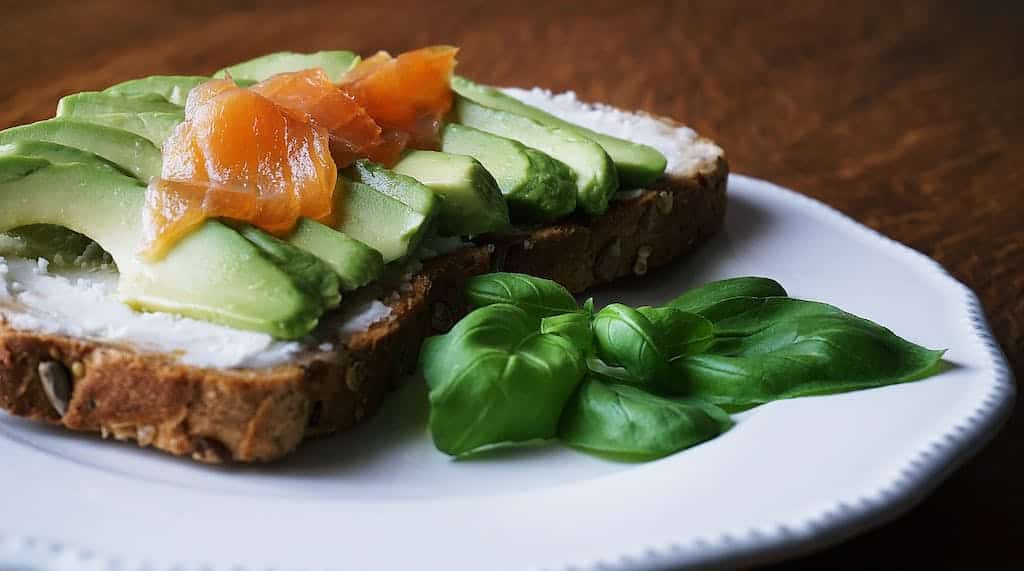Key Takeaways
- Dogs can generally eat prawns as long as they are properly cooked, plain, and free from seasoning or added ingredients.
- Prawns can be a good source of protein, omega-3 fatty acids, and various vitamins for dogs.
- However, it’s important to introduce prawns slowly to your dog’s diet and watch for any adverse reactions or allergies.
- Avoid giving your dog prawns if they have a history of pancreatitis or if they are prone to gastrointestinal issues.
- Remove shells, tails, and any potential choking hazards before offering prawns to your dog.
- Ensure prawns are fully cooked to eliminate the risk of bacterial contamination.
- Limit the quantity of prawns and include them as an occasional treat, not a staple part of your dog’s diet.
Summary
Can a dog eat prawns? The answer is yes, but there are some important considerations to keep in mind. This article explores the benefits and risks of feeding prawns to dogs, the appropriate preparation methods, and potential allergenic reactions. While the initial answer has been provided, it is crucial to understand the details and potential impact on your furry friend’s health. So, continue reading to make an informed decision about including prawns in your dog’s diet.

Can a Dog Eat Prawns?
Many dog owners wonder if it is safe for their furry friends to consume prawns. The good news is that prawns are generally safe for dogs to eat in small quantities, as long as they are cooked properly and given in moderation. Prawns are a great source of lean protein and are rich in vitamins and minerals like selenium, calcium, and zinc, which can be beneficial for your dog’s overall health.
Potential Risks of Feeding Prawns to Dogs
While prawns may provide some health benefits, it is important to be aware of potential risks associated with feeding them to your dog. One risk is the potential for food allergies or sensitivities. Some dogs may have an allergic reaction to prawns, leading to symptoms like itching, diarrhea, or vomiting. It is recommended to monitor your dog closely for any adverse reactions after introducing prawns into their diet.
Preparation and Serving Suggestions
If you decide to offer prawns to your dog, it is crucial to prepare and serve them properly. Avoid feeding your dog raw or undercooked prawns, as this can increase the risk of bacterial contamination or parasite transmission. It is recommended to thoroughly cook prawns until they turn opaque and firm. Additionally, remove the shell, tail, and any seasoning to prevent potential choking hazards or digestive issues.
Feeding Prawns in Moderation
Although prawns can provide nutritional benefits, it is essential to feed them to your dog in moderation. Prawns should not replace your dog’s regular balanced diet, but rather be offered as an occasional treat or addition to their meals. Too much of any new food can upset your dog’s stomach and potentially lead to digestive problems. Always consult with your veterinarian before introducing prawns or any new food into your dog’s diet.
Consider Your Dog’s Specific Needs
Every dog is different, and their dietary needs may vary. Before feeding prawns to your dog, consider their overall health, any existing allergies, and any dietary restrictions they may have. For example, some dogs with specific medical conditions, like pancreatitis, may need to avoid high-fat foods like prawns. It is always best to consult with your veterinarian to ensure prawns are a safe and appropriate addition to your dog’s diet.
Alternatives to Prawns
If your dog cannot eat prawns due to allergies, sensitivities, or other health concerns, there are alternative protein sources you can provide. Dogs can benefit from lean meats like chicken or turkey, fish like salmon or sardines, or even cooked eggs as sources of protein. Always introduce new foods gradually and in small quantities to monitor your dog’s reaction and prevent any digestive upset.
Can a Dog Eat Prawns? – Frequently Asked Questions
1. What are prawns?
Prawns are a type of seafood similar to shrimp. They are crustaceans and often used in various cuisines due to their rich flavor and firm texture. Prawns are commonly consumed by humans in many parts of the world.
2. Is it safe for dogs to eat prawns?
In general, prawns are safe for dogs to consume in moderation. However, there are a few things to consider before feeding your dog prawns:
3. Are prawns nutritionally beneficial to dogs?
Prawns can be a source of protein and various vitamins and minerals such as selenium, vitamin B12, and omega-3 fatty acids. However, it’s important to note that dogs have different nutritional needs compared to humans. While prawns can be a healthy addition to your dog’s diet, they should not replace a balanced dog food.
4. Are there any risks associated with dogs eating prawns?
While prawns are generally safe for dogs, there are a few risks to consider:
- Choking Hazard: Prawns can have hard shells and tails that may pose a choking hazard for dogs. Always make sure to remove the tail, shell, and devein the prawn before offering it to your dog.
- Allergic Reactions: Some dogs may be allergic or sensitive to seafood, including prawns. It’s important to introduce them slowly and monitor your dog for any adverse reactions such as vomiting, diarrhea, or itching.
- Seasonings and Preparation: Many prawn dishes for humans contain seasonings, spices, garlic, or onion, which can be harmful to dogs. Avoid feeding your dog prawns that are seasoned or cooked with potentially toxic ingredients.
5. How should I prepare prawns for my dog?
If you decide to feed prawns to your dog, it’s essential to prepare them in a dog-friendly manner:
- Remove the prawn’s tail and shell completely, as they can pose a choking hazard.
- Devein the prawn to ensure easier digestion.
- Boiling, steaming, or grilling prawns without any seasoning is the best preparation method for dogs.
- Avoid using oil, butter, garlic, or other spices that may be harmful to dogs.
6. How much prawn can I give my dog?
Prawns should only be given to dogs as an occasional treat or part of a balanced diet. The appropriate amount depends on your dog’s size, breed, and overall health. It’s best to consult with your veterinarian to determine a suitable portion size.
7. Are there alternatives to prawns for my dog?
If you’re looking for seafood alternatives for your dog, consider options like plain cooked fish (without seasonings), such as salmon or white fish. These options often provide similar nutritional benefits without the potential risks associated with prawns.
8. What are the signs of an adverse reaction to prawns in dogs?
If your dog has an adverse reaction to prawns, you may notice symptoms such as vomiting, diarrhea, excessive itching, inflammation, or difficulty breathing. If you observe any of these signs, contact your veterinarian immediately.
9. Can prawns be fed to puppies?
It is generally recommended to avoid feeding prawns to puppies, as their digestive systems are still developing. Consult with your veterinarian before introducing any new foods to your puppy’s diet.
10. Can I feed my dog prawn heads?Conclusion
A dog can eat prawns in moderation, but there are certain considerations to keep in mind. Prawns can be a good source of protein and essential nutrients for dogs, but they should always be cooked, plain, and without any seasoning or added ingredients like garlic or onions. Dogs should never be fed raw prawns or prawns with shells, as these can pose risk for choking or causing digestive issues. Additionally, prawns should only be given as an occasional treat and should not replace a balanced diet formulated for dogs. It is always important to consult with a veterinarian before introducing any new food to your dog’s diet to ensure their safety and overall well-being.
📚 Sources:
